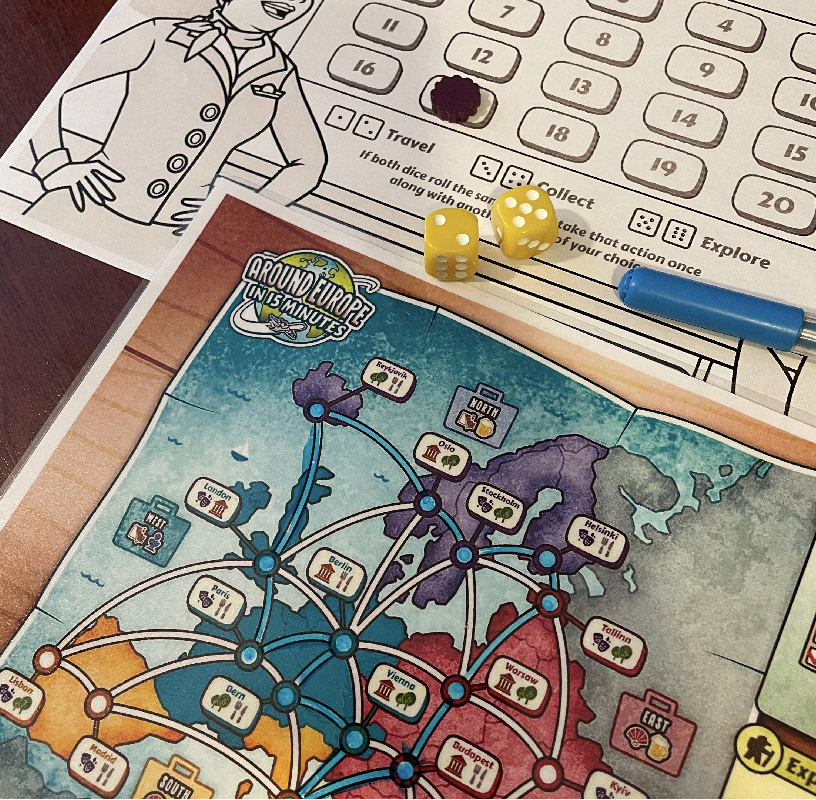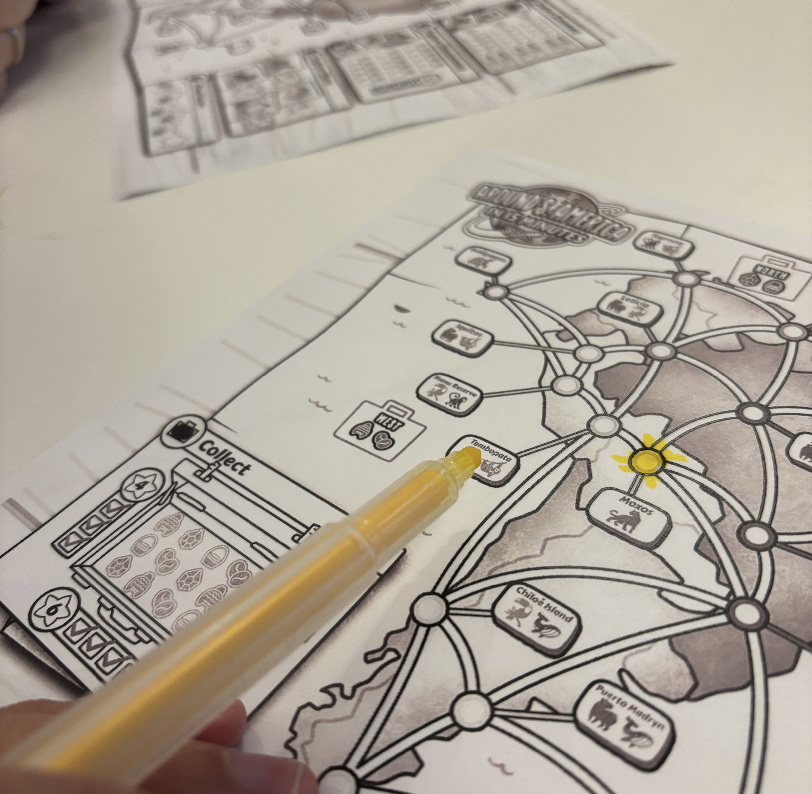Overview
I first came across the game on the PNP Time newsletter, and based on the description alone it already looked like something I'd enjoy playing. Print-and-play games don't seem to generate as much buzz as their boxed counterparts, but that also means there are fewer reference points, fewer "safe" choices. The Shiny Pigeon Games Kickstarter campaign, however, convinced me that this one would be right for me—the price was appealing, and it was clear I wasn't alone in liking it, with more than 400 backers. So I jumped in, and I haven't regretted it.
Game Information
- Designer: Chris Backe
- Year: 2024
- Players: 1-100+
- Time: 15 minutes
- Age: 8+
- Type: Roll-and-write, geography
Key Features
- • Four different maps/game modes
- • Solo and multiplayer gameplay
- • Strategic action selection
- • Geography learning
- • Highly replayable

Review
Print and play
In terms of value for money, I received a very solid board game. The rulebook comes in four languages, with well-crafted, logically structured text and clear illustrations. Four different maps—essentially four different game modes—available in color, black and white, small, large, however you need them. Personally, I could live without the Turn Tracker, but it's better that it's included; you simply don't have to print it if you don't want to. That's one of the perks of the print-and-play format anyway.
So everything is neat, good-quality, and straightforward, and you can pretty much relax already while browsing the files, knowing you've made a good purchase.
Gameplay
Simple rules, a light and smooth flow, and just the right amount of thinking for a game this short. You choose from three actions, and by combining them you try to optimize your point scoring. At first glance it doesn't show, but the action selection can create surprisingly strong interaction between players. The game isn't just about quietly traveling next to each other—your choice determines the other player's action as well, so you have a real impact on your opponent's game. The best decision isn't always the one that benefits you the most; sometimes it's worth messing with the other player's plans a little.
From a game-pedagogical perspective, it's also excellent that the different maps add small twists to the rules. The game is highly replayable, yet the familiar, safe framework lets me present new challenges to kids just by choosing a different map. I had a lot of conversations with my 8-year-old daughter about Europe and its cities simply because we were playing a map-based game.
The scoring is clever, varied enough, but never needlessly complicated. Even as an experienced game designer, it wasn't immediately obvious to me that this action-selection dynamic would work well, but it actually generates surprisingly deep tactical decisions—whether I perform something twice while others only once, or whether an action I take becomes available to the other player as well.
At first I thought this might be primarily a good solo game, but I was wrong—it works brilliantly with multiple players too. It has even become one of my daughter's favorites; we bring it to the table very often.
Solo Mode
Fortunately, the people around me are becoming more and more open to my print-and-play obsession, so I can sneak these kinds of games into game nights more often — and even into my trainings — but it certainly doesn't hurt if a game works well solo too. The dice provide a nice variation in action selection, and I really like the solution that when both dice fall into the same category, you get a freely chosen action. It keeps you from getting stuck.
Just as elegant is the scoring idea that the game rewards you for finishing before the 20 rounds are up. Overall, with just a few small tweaks, the solo and multiplayer modes connect very organically. And as for my high score… there's definitely still room for improvement.

Illustrations
I like the visual design as well, but what matters most is that the player sheet is clear and easy to read. I appreciate when a game can be printed in black and white — which is possible here too — but in the Collect action the regions aren't always easy to distinguish, and the tiny icons can be hard to see. In color, however, there's really nothing to complain about; the illustrations genuinely support the gameplay experience.
Overall Impression
Let's look at the basics. I played it with an eight-year-old, so the 8+ recommendation feels completely realistic. The playtime really is around 15 minutes, and although I haven't tried it with 100 players, it worked very well both solo and with multiple people. I grew fond of it — I enjoy playing it, and it comes to the table often. It's light, quick, yet clever, and I think that's exactly what it claims to be — and since that's exactly what you get, it all adds up to something pretty great!

Check out PlayWise's games and the other reviews too!
Reviews
Quality gaming sessions are also accessible with print and play games.
I'll check out the other reviews.